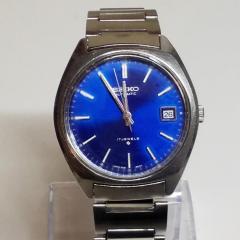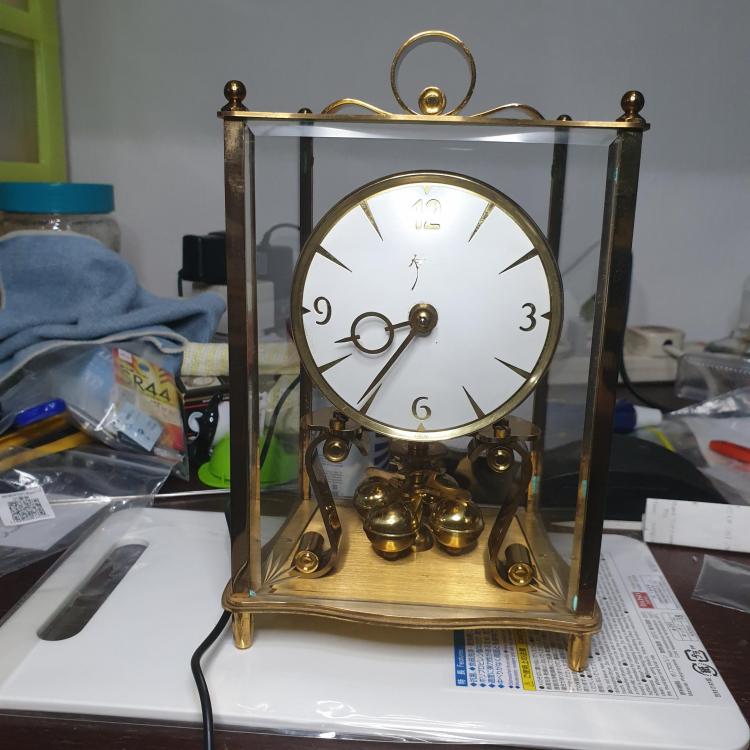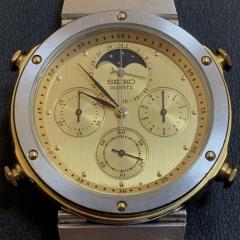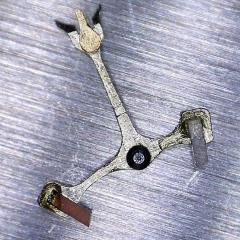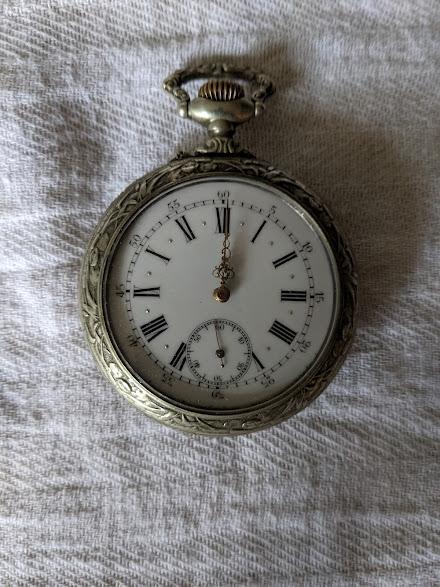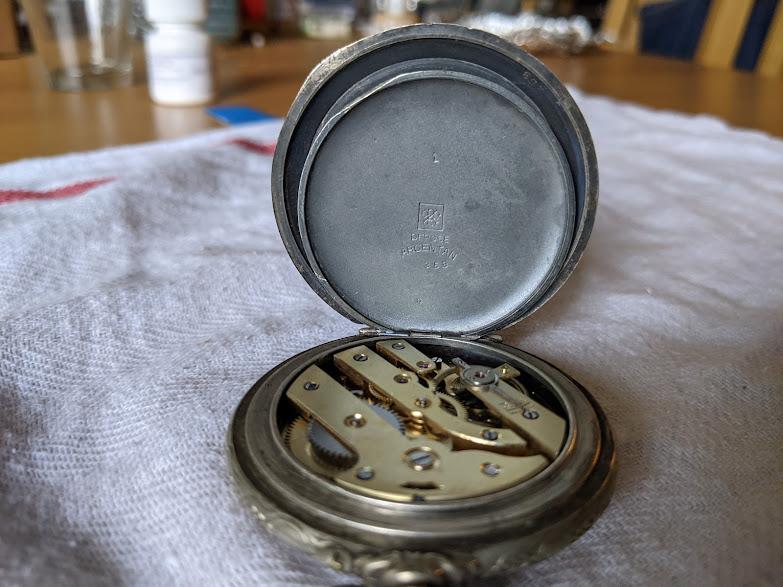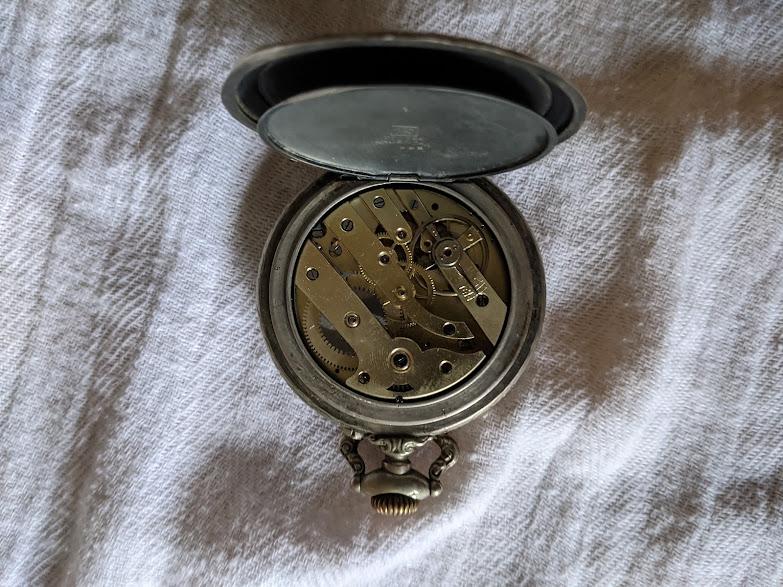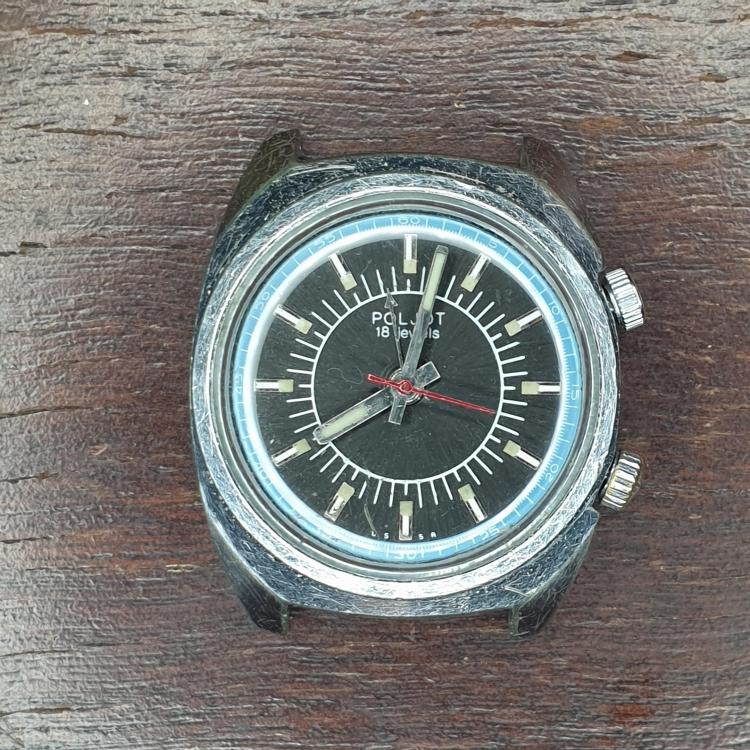Leaderboard
Popular Content
Showing content with the highest reputation on 10/25/21 in all areas
-
Not all watches with flat spring have the distinctive "dog leg" from the terminal curve to the hair spring body. This one looks OK to me, maybe needs a little bit of centering, but I think it's otherwise original and correct.5 points
-
Interesting, but please don't try to copy this on your beautiful watch. It may not even be necessary. Let your watchmaker take a good look at it.5 points
-
This may be of interest ... https://journal.hautehorlogerie.org/en/openmovement-aims-to-revitalise-watchmaking/2 points
-
Thanks for all your advice. Have found a professional clock repairer who has been recommended by a good clock dealer. Unfortunately, it will take 3 to 4 months as he has a lot if backlog work which seems to be the case with good repairers at the moment. Another repairer who I have used before has a 9 months waiting list, but he is now a celebrity!2 points
-
Maybe just one lens change over then we'll see 2 just to be sure2 points
-
Hi all, check these animated disassembley and assembly videos. Great for educational purposes.1 point
-
Many people aren’t aware, but these days the entire Microsoft .NET platform is Open Source. What used to cost thousands of dollars is now free to download available on GitHub. I think they did the right thing for everyone, themselves and the consumers. I think the watch industry would benefit from moving in the same direction.1 point
-
648 is lower viscosity and for smaller gap filling; on something like a tube that has slight but insufficient friction it has a better performance than 638. For larger looser fits, or where a portion of the part can be recessed to provide room for the product 638 is a better choice.1 point
-
If you point your browser at https://openmovement.org/ you can get all the up to date info.1 point
-
This is a Kundo anniversary clock that I bought earlier this year, intending it as a Christmas present. I finally got it up and running. I cleaned and oiled the movement and replaced the suspension spring and suspension fork. I worked till almost midnight and thought I'll set it in beat after work today. But to my surprise, it was still running this morning and even when I returned from work. I dunno if it a fluke or someone up there is watching over me.1 point
-
Good for a nice shine on your nails as well. The Mrs nicked some of mine lol1 point
-
1 point
-
As far as th industry goes this is radical thinking and will I am sure lead to a resurgence in the mechanical watch. The quartz watch will hold its position due to the fact that is can be programmed into a small space with many complications. but there are many who still prefer the mechanical watch and this will give people the choice. Being open source will no doubt create an interest in the training facilities and many gifted amatuers as well who will all bring somthing to the party. A brilliant concept .1 point
-
someone is watching over you, Got it leveled up ok and in beat otherwise nogo. Nice job HECTOR I have about six of these and only had that luck once but when moved into the house it eventually stopped, its in the cabinet now with some of the others. for it to rum I would have to set it up again to match the cabinet shelf.1 point
-
I completely agree, it's just a shame that the right-to-repair legislation recently introduced only covers electrical goods. I wonder how much lobbying is going on to make sure it stays that way? I think the car industry did try doing that not too long ago! There seems to be a healthy industry in the alternative spare parts market for cars (non OEM) giving the consumer a choice.1 point
-
1 point
-
Heres a good vid showing how to shape an end curve. http://www.bobinchak.com/watchmaking/2017/4/27/hairspring-week-forming-the-endcurve1 point
-
I want to thank everyone for the help on this timing issue. So far for the last seven hours it has been running perfect with no variation in time. I’m gonna let it run through tomorrow to give it a 24 hour period and see how it’s doing. But again just wanted to thank everyone for their help on here, I’ll let you know how it goes. Kevin1 point
-
Hi Kevin, There is no sign of a terminal curve , hence you are altering the coil's concentricity as you move the regulator arm. As is, that four minutes will be corrected by moving regulator arm anticlockwise. Regs1 point
-
Hello G, We best swap eye glasses, one of us might actually see better. lol. Regards Joe1 point
-
If they're genuinely the best at what they do then they should freely accept competition.1 point
-
A recently serviced watch shouldn't run like that. I'm an amateur but no way would those readings be acceptable to me. Travelling around the world won't affect a watch and being 52 years is nothing, it's a fairly modern watch. Getting it sorted now will save you time/money in the future... you might even be able to do it yourself. There's a ton of experts on this forum willing to help.1 point
-
They really are the wrong way round. I have just looked again at your pic with the test result and if the snow storm at the bottom of the screen shot is your trace then you can't really draw any sensible conclusions from the result other than the movement needs a proper clean and service. The trace appears to be so irregular that the timing machine is actually unable to deduce an amplitude. You want to see two clean, regular lines of dots (or just one if the beat error is zero), and an amplitude of 220 degrees or more before you start to worry too much about daily rate.1 point
-
I hate the parts restrictions as much as anybody, but they didn't come out of a vacuum. In the 70s the quartz crisis hit very hard. Manufacturers were closing left and right, and within a short time a quartz watch could be had for less than a mechanical, 10 times more accurate (or more?), and require only a battery change here and there. There were articles in trade journals on how to shorten the time time it took to perform an overhaul on mechanical watches- customers didn't want to pay the "going price" anymore. Partial disassembly or even cleaning entire movements became common with the introduction of final rinses that supposedly lubricated the movement correctly. By the 80s watchmaking schools were seeing a huge drop in applicants, older watchmakers were advising young people to find another trade, schools were closing or cutting their curriculum to the bone and essentially producing hacks. Rolex did begin restricting parts. At first it was checking on the actual ability of the watchmaker and seeing that they were adequately equipped. Then it got tighter and tighter, with requirements of making significant investment in seldom used equipment, more training, etc., then finally in the 2000s it has come to only supplying parts to watchmakers working in a Rolex dealer, with all the equipment and doing training and so forth. So it was a process over decades, and not done out of greed, but to guarantee a top level of service. I can say that having viewed the insides of some Rolexes that were 10+ years old or 10+ years after factory service, they look fantastic- Kifs still well oiled, oil sinks clean and oil filled, all great. A friend who worked for Rolex as a trainer told me they clean the movement 3 times for an after sales service. Pre-clean, then disassemble and inspect, peg all holes, pith all pinions, check the functions, replace any and all worn parts and certain parts regardless just as a precaution, clean again, then a final clean in pristine solutions. Epilame used where appropriate. Get some oil on top of the jewel?- back through the machine. Other makers have tried to follow suit, but without systematically building up the internal structure to handle the workload. So there are a lot of unhappy owners of Tag Heuers and other brands out there, who wait an unreasonably long time for a service, then get a watch back that many times has been given a subpar service. 20 years before the quartz crisis it was common to have your watch serviced once a year or so. It was OK to use lesser cleaning methods, and maybe not be as picky with oiling technique, as the watch was going to be redone in a matter of months. Also, the use of natural lubricants meant that oil would tend to thicken up and stop the watch before wear occurred. Now, if you miss something the watch might grind itself to dust on certain parts. So, rambling a bit, but just wanted to stick up a little for Rolex, as they have gone this route truly to ensure that their watches are at the level they desire (and I have nothing to do with them, I might see a couple a year and don't own one). At the end of the day I agree with the often used comparison to car parts. A friend has a couple of Porsches and does most of his own service work (he's also a watchmaker, haha), and he never has an issue getting any part for his cars. That anyone can buy anything for a device that is potentially lethal to the owner and others, while some mid-tier watch company doesn't want to supply parts to "ensure quality" is rotten. It used to be mentioned in discussions like these that buyers should vote with their wallet and only buy from makers who do supply parts, but it's gotten to where that pretty much eliminates everything. For the moment Omega is the star; with a reasonable outlay for some specific tooling for dealing with cases, and a modernly equipped shop, and a reasonable amount of training, you can get a parts account with them. A friend has one, and says they are also very easy to deal with and fast with getting the parts out. The same guy had an account with Zenith- but they decided to make their parts account holders invest in thousands of bucks worth of tooling (Ok...), and also order a minimum dollar amount of parts per year, which would equate for him to doing only Zenith work, haha. So he let it go. A shame.1 point
-
What is "shoe goo"? I've ordered some Loctite 648 - designed to be more permanent than normal thread lock. AS @nickelsilver says : "It's specifically for locking cylindrical fits, basically permanent unless significant heat is applied".1 point
-
My pocket watch came from my mother's family. It's been in the family for close to 100 years. My mother was born in 1918 and the watch was given to her by her aunt. A local clock and watch repair technician said that he thought it might be Swiss and that it broke his heart that he couldn't fix it. He said that it was a cylinder type escapement with a hollow spindle and that the balance wheel was broken, probably from having received a sharp knock. Can anyone help with finding someone who would consider repairing such a watch.1 point
-
It's a double edged sword though, isn't it? If it's commoditized, that means something (tools, manufacturing practices, etc.) has improved to the point where commoditization is truly possible. It also means that there's been a renewal of appreciation for the art and science of horology, and a return to the golden age. There was a time when watchmaking was a commodity, and all that changed was the advancement of technology. Things can come back. On the one hand, you have things like bellbottom jeans. Fashion is... Dumb. I don't know. Not my bag. On the other hand, vinyl records have come back. With streaming the norm, if you want to own your music and listen to it on demand (easy for people where there's some form of telecommunications easy to hand, not so easy for others), vinyl has proven to be a superior medium in terms of quality. It has staying power due to quality and relative simplicity. I can't say for sure mechanical watches would fall into one camp or the other, but it's not impossible. If it were to happen, would it really be a bad thing? Sure, we'd get a flood of jeweless full plate pin lever movements, but there'd be a renaissance of mid-tier, quality movements (2824, Newton, and there was a third I read about recently) that would be reliable and beloved workhorses. Maybe watchmaking wouldn't be as "special", but again I'm not sure that's a bad thing. Love. It. Very familiar with the concept, and I know I learned it in B-school, but like many things from school it had faded. I love words like that.1 point
-
1 point
-
My understanding is that superglue should not be used in watches as the vapours can cause damage/staining in some circumstances. GS-Hypo Cement (used for fixing crystals and in jewellery) would be e safer solution, the tube it is supplied in has a very fine outlet tube and needle which makes application very easy. Apply to back and allow to wick as superglue above, it only takes a few seconds to set so adjustment is possible unlike superglue.1 point
-
The Tag cal 7 is based on the ETA 2892-2 so the link below should help. Strange that TAG has messed up and it was not sent back thou. https://watchguy.co.uk/tmp/ETA 2892-2.pdf1 point
-
Download the Sellita SW300 document on their website: https://www.sellita.ch/index.php/en/1 point





